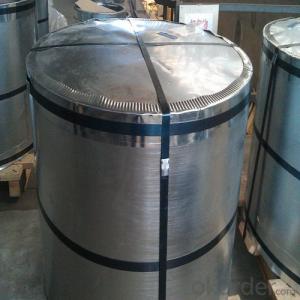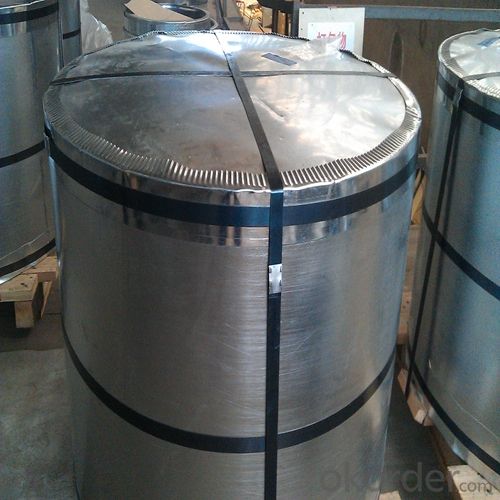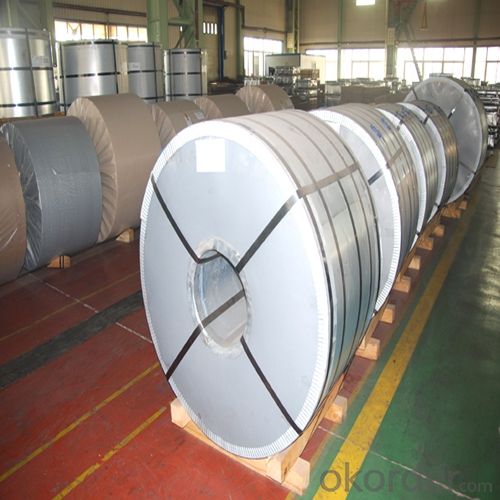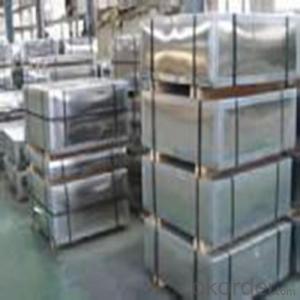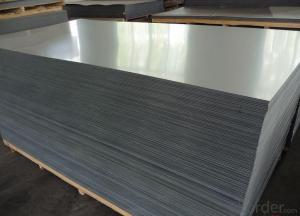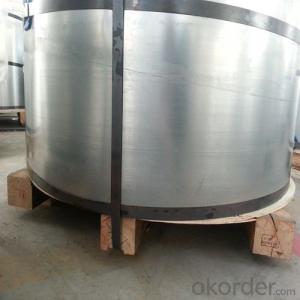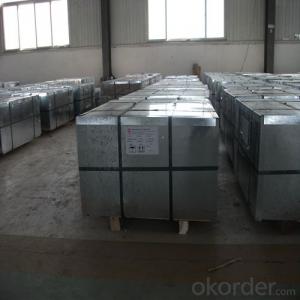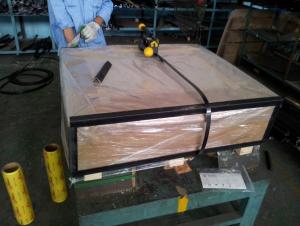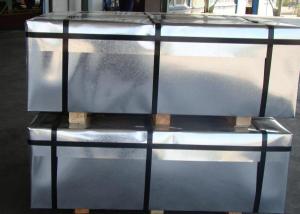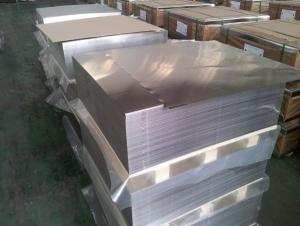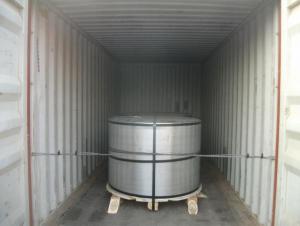Electrolytic Tinplate of Prime Quality for Twist-off Caps Use 0.26mm Thickness
- Loading Port:
- Shanghai
- Payment Terms:
- TT OR LC
- Min Order Qty:
- 25 m.t.
- Supply Capability:
- 15000 m.t./month
OKorder Service Pledge
OKorder Financial Service
You Might Also Like
Specification
1.Structure of Electrolytic Tinplate of Prime Quality for Twist-off Caps Use 0.26mm Thickness Description
Corrosion resistance – Tinplate has got good corrosion resistance. By selecting a proper coating weight, appropriate corrosion resistance is obtained against container contents. Coated items should meet 24 hour 5 % salt spray requirement.
Solderability and weldability – Tinplates can be joined both by soldering or welding. These properties of tinplate are used for making various types of cans.
Hygienic – Tin coating provides good and non toxic barrier properties to protect food products from impurities, bacteria, moisture, light and odours.
Safe – Tinplate being low weight and high strength makes food cans easy to ship and transport.
Eco friendly – Tinplate offers 100 % recyclability.
Tin is not good for low temperature applications since it changes structure and loses adhesion when exposed to temperatures below – 40 deg C.
2.Main Features of the Electrolytic Tinplate of Prime Quality for Twist-off Caps Use 0.26mm Thickness
Appearance – Tinplate is characterized by its beautiful metallic luster. Products with various kinds of surface roughness are produced by selecting the surface finish of the substrate steel sheet.
Paintability and printability – Tinplates have excellent paintability and printability. Printing is beautifully finished using various lacquers and inks.
Formability and strength – Tinplates have got very good formability and strength. By selecting a proper temper grade, appropriate formability is obtained for different applications as well as the required strength after forming.
3.Electrolytic Tinplate of Prime Quality for Twist-off Caps Use 0.26mm Thickness Images
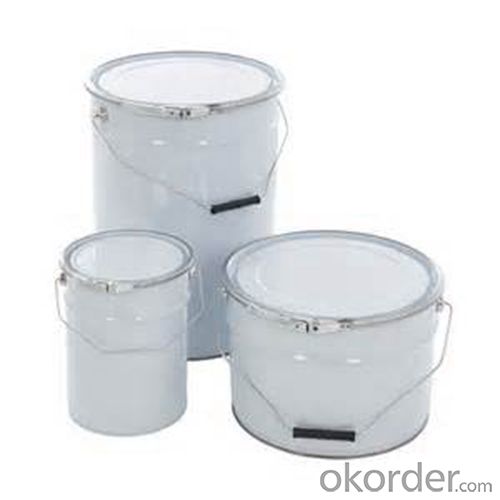
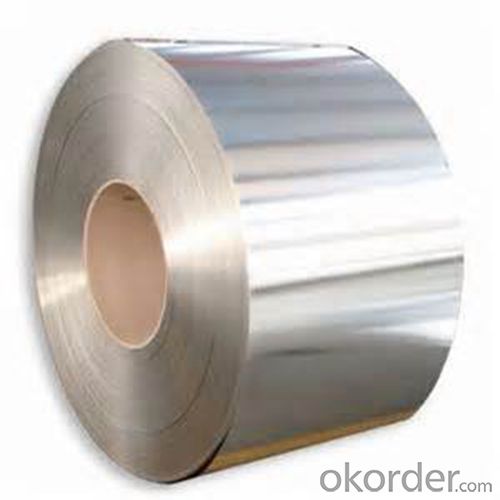
4.Electrolytic Tinplate of Prime Quality for Twist-off Caps Use 0.26mm Thickness Specification
Specification of :
Standard: ISO 11949 -1995, GB/T2520-2000,JIS G3303,ASTM A623, BS EN 10202
Material: MR,SPCC
Thickness:0.15mm - 0.50mm
Width: 600mm -1150mm
Temper: T1-T5
Annealing: BA & CA
Coil Inner Diameter: 508mm
Weight: 6-10 tons/coil 1~1.7 tons/sheets bundle
Passivation:311
Oil: DOS
Surface: Finish,bright,stone,matte,silver
5.FAQ of Electrolytic Tinplate of Prime Quality for Twist-off Caps Use 0.26mm Thickness
- What is tinning and how does it work?
Tinning is the process of thinly coating sheets of wrought iron or steel with tin, and the resulting product is known as tinplate. It is most often used to prevent rust.
- Do you only have prime quality tinplate?
We can supply both prime and second quality tinplate.
- Q: How does tinplate contribute to the resistance of marine equipment?
- Tinplate contributes to the resistance of marine equipment by providing a protective barrier against corrosion. The tin coating on the steel substrate acts as a sacrificial layer that prevents the underlying metal from coming into contact with moisture and saltwater, which are common in marine environments. This corrosion resistance property of tinplate helps to prolong the lifespan of marine equipment and ensures its durability even in harsh conditions.
- Q: What are the main challenges in tinplate coating?
- The main challenges in tinplate coating include ensuring uniform and consistent coating thickness, preventing defects such as pinholes and streaks, managing adhesion between the tin and base metal, and addressing environmental concerns related to the use of certain chemicals and waste disposal. Additionally, maintaining high production speeds while maintaining quality standards and reducing costs poses another challenge in tinplate coating.
- Q: What are the main applications of tinplate in the pharmaceutical industry?
- Tinplate is commonly used in the pharmaceutical industry for packaging purposes. It serves as a reliable and durable material for manufacturing cans, containers, or closures for various pharmaceutical products. Tinplate provides an effective barrier against moisture, light, and oxygen, helping to preserve the integrity, stability, and shelf life of pharmaceutical drugs. Additionally, tinplate's resistance to corrosion ensures the safety and quality of the packaged medications.
- Q: Can tinplate be used for luxury packaging?
- Yes, tinplate can be used for luxury packaging. Tinplate is a versatile material that offers a high level of durability, strength, and visual appeal. It can be molded into various shapes and sizes, making it suitable for creating luxurious and exquisite packaging designs. Additionally, tinplate has a premium appearance and can be decorated with intricate designs or embossing, enhancing the overall aesthetic of luxury packaging.
- Q: Can tinplate be used for chemical packaging?
- Yes, tinplate can be used for chemical packaging. Tinplate is a type of steel coated with a layer of tin, which provides a protective barrier against corrosion and contamination. This makes it suitable for storing and transporting various chemicals safely. Additionally, tinplate is a durable and lightweight material, making it an ideal choice for chemical packaging.
- Q: How does tinplate compare to other packaging materials in terms of cost?
- Tinplate is generally considered to be more expensive than other packaging materials such as aluminum or plastic. However, its durability, protective qualities, and recyclability make it a cost-effective choice in certain industries where the preservation of product quality is crucial, like food and beverages.
- Q: What are the main challenges in tinplate coil handling?
- The main challenges in tinplate coil handling include ensuring proper lifting and transportation techniques to avoid damage, managing the weight and size of the coils for safe handling, maintaining cleanliness to prevent contamination, and implementing efficient storage and inventory management systems. Additionally, coordinating with suppliers and customers to ensure timely delivery and minimizing transit damage are also significant challenges.
- Q: How does tinplate packaging contribute to product protection against UV rays?
- Tinplate packaging helps to protect products against UV rays by acting as a barrier, preventing the penetration of harmful ultraviolet light. The reflective properties of tinplate also minimize the absorption of UV radiation, further safeguarding the product from potential damage caused by exposure to sunlight.
- Q: How is tinplate coated for aerosol cans?
- Tinplate is coated for aerosol cans through a process called electrolytic tin coating. In this process, a thin layer of tin is deposited onto the surface of the tinplate by immersing it in a bath of tin solution. The tin coating provides a protective barrier against corrosion and ensures the cans remain durable and airtight.
- Q: What are the health and safety concerns associated with tinplate?
- Tinplate, a thin steel sheet coated with a layer of tin, can present some health and safety concerns. One primary concern is the potential for tin contamination in food or beverage products stored in tinplate cans. Prolonged exposure to high levels of tin can lead to health issues such as gastrointestinal problems, kidney damage, and even neurological disorders. Additionally, the manufacturing process of tinplate involves the use of chemicals and substances that may pose risks to workers, such as potential inhalation hazards or skin irritation. Proper handling, storage, and adherence to safety guidelines are crucial to minimize health and safety risks associated with tinplate.
Send your message to us
Electrolytic Tinplate of Prime Quality for Twist-off Caps Use 0.26mm Thickness
- Loading Port:
- Shanghai
- Payment Terms:
- TT OR LC
- Min Order Qty:
- 25 m.t.
- Supply Capability:
- 15000 m.t./month
OKorder Service Pledge
OKorder Financial Service
Similar products
Hot products
Hot Searches
Related keywords
